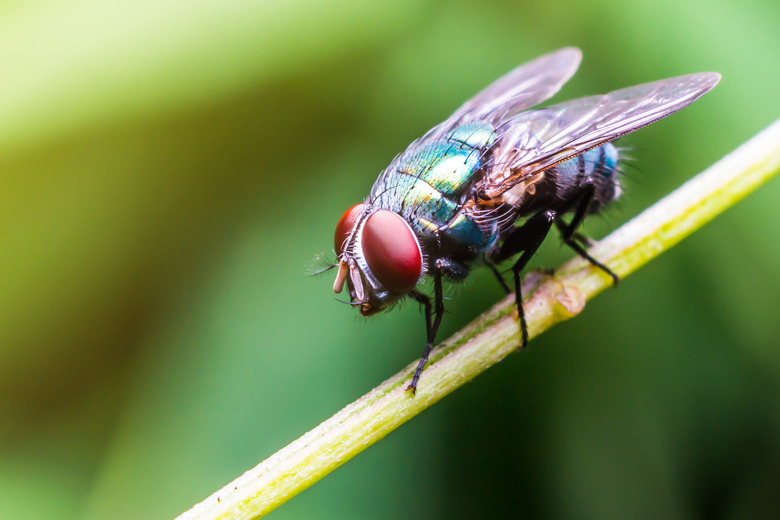The Differences Between Animals & Insects
Insects are the most successful, widespread and prolific members of the animal kingdom. They are members of the phylum Arthropoda, which also includes arachnids, centipedes and crustaceans. All arthropods are invertebrates with exoskeletons and jointed limbs. Two prominent features distinguish insects from other arthropods, and from all other animals: they have bodies divided into three segments, head, thorax and abdomen and they have six jointed legs. Other common insect features include compound eyes, wings, antennae and multiple-stage life cycles.
Life Cycle
Life Cycle
Insects live complex life-cycles, and many undergo complete metamorphosis. Insect species that undergo complete metamorphosis pass through egg, larva and pupa stages before reaching adulthood. The larva that emerges from the egg may look very different from the mature insect. A caterpillar has more than six legs and multiple body segments, and doesn't appear to be an insect at all, but it is still classified as such because the adult butterfly does have six legs and a three-segmented body.
Head
Head
A pair of compound eyes, two antennae and external mouth parts characterize the head of a typical insect. A compound eye is a cluster of repeating light sensitive units, each unit functioning as an independent visual receptor. The specialized mouth parts reflect adaptations specific to the diet of the insect. A butterfly feeds on nectar through a long tube, while a grasshopper uses segmented mandibles to hold and tear foliage, and a mosquito pierces flesh with a needle-like appendage. The antennae, too, are diverse in form and function. Most insects use them to detect odor and moisture.
Thorax
Thorax
This middle section of the body bears the legs and, on flying insects, the wings. An insect breathes through tiny holes on the side of the thorax called thoracic spiracles. The legs are widely adapted to serve different functions in different species of insect. They may be used for waking, hopping, swimming, grasping, digging and in a variety of other ways. Most insects have one or two pairs of wing, often beneath a protective cover.
Abdomen
Abdomen
This usually elongated posterior section houses the insect's digestive tract, and a number of other specialized organs. Spiracles used for breathing run down either side, and the anus and reproductive organs are at the very back of the abdomen. The abdomens of some insects, such as earwigs, terminate in a pair of defensive pinchers. Others, like bees, ants and wasps, have venomous stingers. The abdomen is often soft, and covered in telescoping exoskeletal segments that allow for expansion and muscle contraction.
Cite This Article
MLA
Samson, David. "The Differences Between Animals & Insects" sciencing.com, https://www.sciencing.com/differences-between-animals-insects-8673417/. 22 November 2019.
APA
Samson, David. (2019, November 22). The Differences Between Animals & Insects. sciencing.com. Retrieved from https://www.sciencing.com/differences-between-animals-insects-8673417/
Chicago
Samson, David. The Differences Between Animals & Insects last modified March 24, 2022. https://www.sciencing.com/differences-between-animals-insects-8673417/
